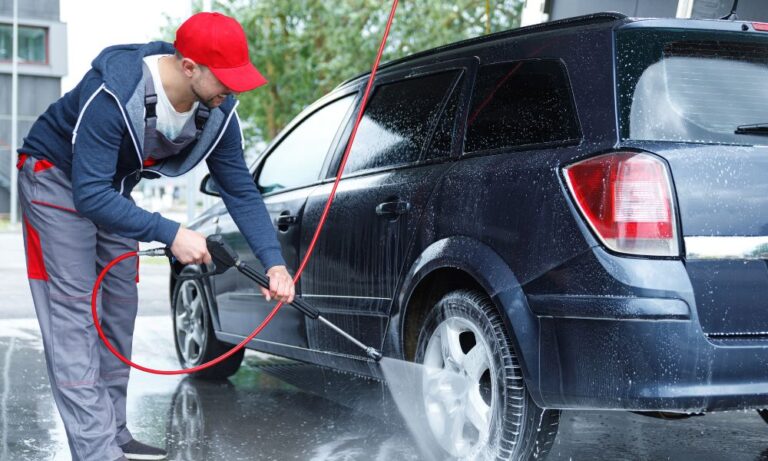How to Read Tire Size: A Comprehensive Guide
For many automobile owners, the world of tire sizes may be like a foreign language. However, maintaining the economy, safety, and performance of your car depends on knowing how to read tire size. The basis of your car’s interface with the road, tires have an impact on everything from handling to fuel efficiency. You’re not alone if you’re unsure of how to decipher the apparently mysterious characters and numbers engraved on the sidewall of your tire. By demystifying tire sizes and outlining their importance, this article will help you make well-informed choices when buying or changing tires.
Understanding the Basics of Tire Size
A global system that encodes crucial details about the tire’s dimensions, composition, and functionality governs tire sizes. A set of letters and numbers, such as 205/55R16, is shown on the sidewall of each tire. Important information about the tire is revealed by these apparently random characters. You can comprehend the function of each tire code segment and how it impacts your car’s overall performance by dissecting it.
Breaking Down the Tire Size Code
Each character in the tire size code, which is a combination of letters and numbers, denotes a distinct feature of the tire. To understand what the tire code means, let’s examine it in more detail. 205/55R16 91V is a common tire code. Here’s how to learn about each part:
- 205: This is the width of the tire in millimeters, measured from sidewall to sidewall.
- 55: This is the aspect ratio, a percentage that shows the tire’s height relative to its width.
- R: This signifies the tire’s construction type, which in this case is radial.
- 16: The diameter of the wheel, in inches, that the tire is designed to fit.
- 91: The load index, which indicates the maximum weight the tire can support.
- V: This letter represents the speed rating, telling you the maximum speed the tire can safely maintain.
The First Number: Tire Width
The width of the tire, expressed in millimeters, is the first number in the tire size. The breadth of the tire across the sidewalls, for example, is represented by the number 205 in a tire size of 205/55R16. More contact with the road is usually provided by a wider tire, which enhances grip and stability. Wider tires, however, may also result in more rolling resistance, which might lower fuel economy. You must balance handling, comfort, and fuel efficiency while choosing a tire width.
The Aspect Ratio: What It Tells You About the Tire’s Height
The aspect ratio, or sidewall height expressed as a percentage of tire width, is the second digit in the tire code. For instance, the aspect ratio of a 205/55R16 tire is 55. This indicates that the sidewall of the tire is 55% as high as it is wide. Generally speaking, a shorter sidewall with a lower aspect ratio makes the ride livelier and more responsive, but it may also be harsher. A taller sidewall, which provides more comfort and a smoother ride, is indicated by a larger aspect ratio.
The “R” in Tire Size: Radial Tire Construction Explained
The tire size code’s “R” denotes “radial,” which characterizes the kind of tire manufacturing. Fabric cord layers that extend radially (from the tire’s center) across the tread make up radial tires. Better traction, increased fuel economy, and a longer tire life are all intended benefits of this architecture. Since they perform better than the more antiquated bias-ply tires, radial tires are now the most widely used tire type.
The Next Number: Tire Diameter
The diameter of the wheel that the tire is intended to fit, expressed in inches, is indicated by the following number in the tire size code. For instance, the “16” in tire size 205/55R16 denotes a 16-inch wheel diameter. The tire diameter guarantees a good fit on the rims of your car. For compatibility with the wheel size of your car, choosing the appropriate diameter is crucial. The performance and safety of the car may suffer if you choose a tire that is bigger or smaller than is advised.
Load Index: Understanding the Tire’s Load Capacity
The maximum weight that the tire can sustain when properly inflated is indicated by the load index, which is represented by a number like 91 in the tire size code. The bigger the number, the larger the tire’s load capacity. For instance, a tire with a load index of 91 can normally handle 1,356 pounds. Selecting a tire with the right load index is essential to ensuring that it can support the weight of your automobile, passengers, and goods in a safe manner.
Speed Rating: Understanding How Fast Your Tires Can Go
The highest speed a tire can sustain safely over lengthy periods of time is indicated by its speed rating, which is represented by a letter like “V.” When the tire has a “V” rating, it can go up to 149 mph (240 km/h). Selecting a tire with a speed rating that fits both your driving style and the capabilities of your car is essential. It’s critical to choose tires that meet your vehicle’s performance requirements if you often travel at high speeds.
Other Tire Markings and Symbols
Tires are often marked with various other symbols and codes that can provide additional information. These may include the following:
- DOT Code: This series of letters and numbers indicates the tire’s place of manufacture and its age. The last four digits represent the week and year the tire was produced.
- Treadwear, Traction, and Temperature Ratings: These ratings provide information on how the tire performs in various conditions, such as wear resistance, wet traction, and heat dissipation.
- M+S: The M+S marking indicates that the tire is suitable for mud and snow, often found on all-season or all-terrain tires.
How to Measure Tire Size Yourself
While reading tire size codes is relatively simple, you may need to measure your tires manually in certain situations. Here’s a basic guide to measuring tire size on your own:
- Measure the tire’s width: Use a tape measure to measure the width of the tire from one sidewall to the other, excluding the tread.
- Measure the sidewall height: To calculate the sidewall height, multiply the tire width by the aspect ratio (e.g., for a 205/55R16 tire, multiply 205 by 0.55).
- Measure the diameter: Measure the diameter of the wheel, which should match the diameter listed in the tire size code.
Common Tire Size Myths Debunked
There are a number of myths surrounding tire sizes that can lead to confusion. One common misconception is that a bigger tire size always improves vehicle performance. In reality, larger tires can increase fuel consumption and negatively impact handling if not properly matched with the vehicle. Additionally, it’s often believed that mixing different tire sizes on the same vehicle is acceptable, but doing so can affect handling, alignment, and safety. That’s why learning how to read tire size correctly is essential to avoid these mistakes. Improper sizing or alignment issues can also lead to problems like uneven wear, including what causes tire feathering, which reduces both performance and safety.
How Tire Size Affects Fuel Efficiency
Tire size plays a crucial role in fuel efficiency. Larger tires typically have more rolling resistance, meaning the engine has to work harder to maintain speed. This can reduce fuel economy. Conversely, smaller tires with lower rolling resistance can improve fuel efficiency. However, the trade-off is that they may reduce the vehicle’s traction and overall performance. It’s important to balance tire size with the vehicle’s fuel economy needs, and if you’re considering a change, you should also understand whether you can change tire size on the same rim to ensure compatibility and safety.
How to Find Your Vehicle’s Recommended Tire Size
Your vehicle’s recommended tire size can usually be found in the owner’s manual, on a sticker inside the driver’s side door jamb, or on the tire placard. This information ensures that you select the right tire size to maintain your vehicle’s performance and safety standards. Always refer to the manufacturer’s recommendations to avoid choosing the wrong size, which could lead to handling problems or damage to the vehicle. Knowing how to read tire size properly will help you match these recommendations with confidence.
Upgrading Your Tires: How to Choose the Right Size
If you’re considering upgrading your tires, it’s essential to choose a size that fits your needs while also maintaining compatibility with your vehicle. For example, choosing larger tires can improve aesthetics and off-road performance but might negatively affect fuel efficiency or handling. Always weigh the pros and cons before deciding on a tire upgrade, and consult with a tire professional if you’re unsure.
When to Consult a Tire Professional
If you’re ever uncertain about reading tire sizes or selecting the correct tire for your vehicle, it’s always best to consult a tire professional. They can guide you in selecting the right tire size, ensuring optimal performance and safety. Regular tire inspections are also essential for identifying any issues that may not be immediately apparent. Learning how to read tire size on your own, however, can give you more confidence before consulting a professional.
Conclusion: Mastering Tire Size for Better Vehicle Performance
Understanding how to read tire size is a crucial skill for every vehicle owner. With a clear understanding of the tire size code, you can make informed decisions when purchasing new tires, ensuring that they are perfectly suited to your vehicle’s needs. Whether you’re looking to replace tires or upgrade to something more suited to your driving style, knowing how to interpret tire codes will allow you to make choices that enhance your car’s safety, performance, and efficiency.







